Are you eager to transform your photography passion into a profitable venture? Selling photos to stock photo companies is a fantastic way to achieve this, and dfphoto.net is here to guide you through the process. Discover how to license your images, connect with a vast market, and earn money through your creative work. Let’s explore the world of stock photography and unlock your potential for passive income. Understand key strategies, industry insights, and the best platforms to maximize your earnings and build a successful photography business with dfphoto.net.
1. Discover the Best Websites for Selling Photos Online
Selling your photos online can open up a world of opportunities to earn passive income and gain recognition for your work. Various websites cater to different niches and offer unique benefits for photographers. Understanding these platforms is crucial for maximizing your earnings and reaching the right audience.
1.1 Alamy
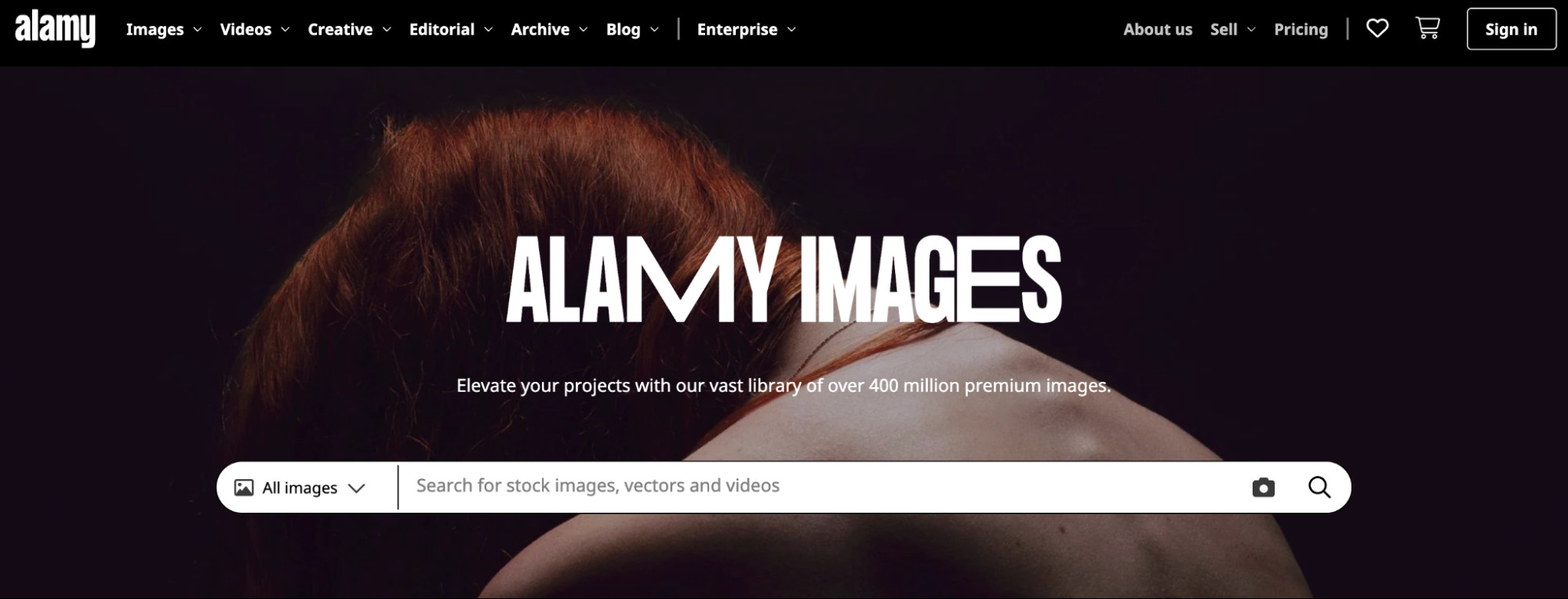 Alamy Images homepage displaying a search bar for royalty-free image discovery, optimized for dfphoto.net users.
Alamy Images homepage displaying a search bar for royalty-free image discovery, optimized for dfphoto.net users.
What makes Alamy stand out? Alamy boasts one of the most diverse stock photo collections online, offering millions of images, vectors, videos, and 360-degree panoramic shots. According to Alamy, they provide photographers with the opportunity to reach a broad audience. They also have an iOS app called Stockimo, enabling you to sell photos directly from your phone.
How to Get Paid on Alamy
How does Alamy handle payments? Alamy provides monthly payments to contributors with varying commission models. Photographers can earn between 17% and 50% of sales, influenced by image popularity and license type. The flexibility of no long-term contracts and payment in multiple currencies makes Alamy an attractive option.
1.2 500px
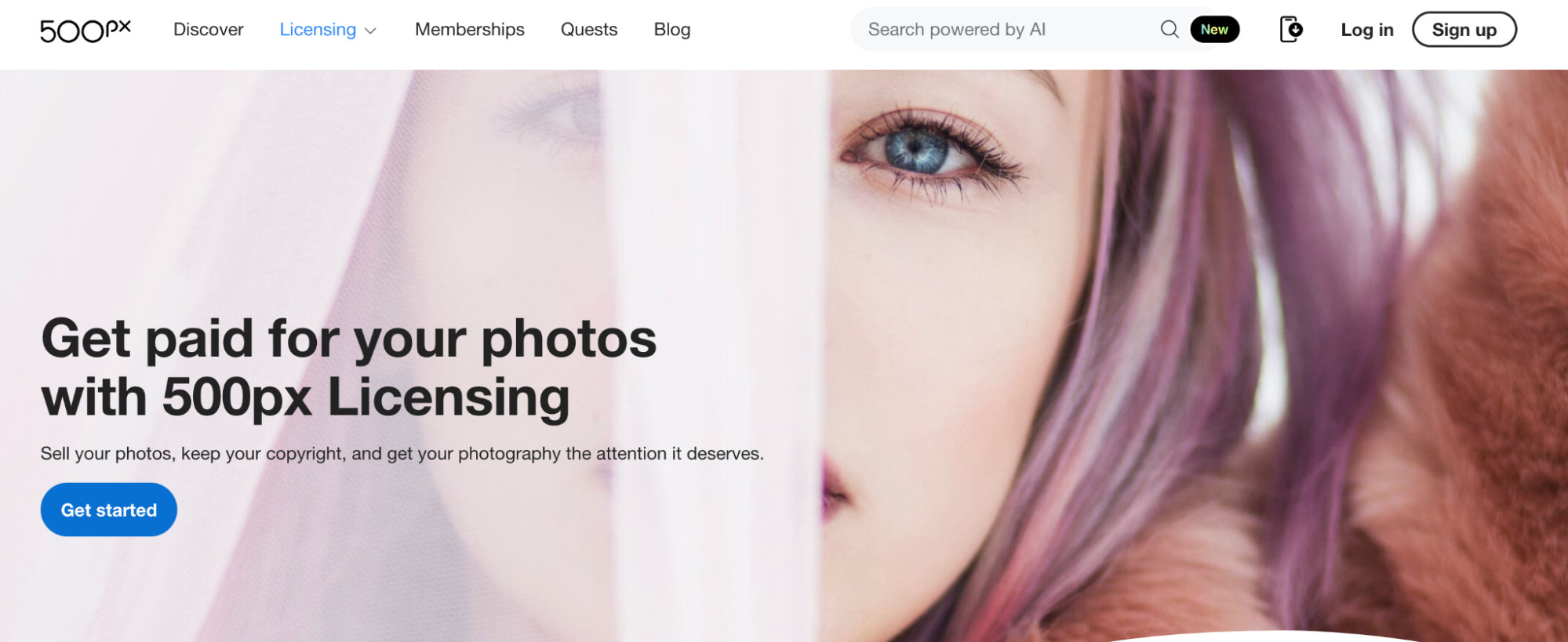 500px's homepage highlighting how contributors can earn from photo licensing, a key feature for dfphoto.net users.
500px's homepage highlighting how contributors can earn from photo licensing, a key feature for dfphoto.net users.
What are the key features of 500px? 500px combines stock photo licensing with community features, hosting millions of photographers who sell and license their work. The platform’s Pulse algorithm helps new photos and photographers gain recognition, provided they meet the platform’s quality standards.
How to Get Paid on 500px
What are the royalty rates on 500px? Paying members can earn up to 100% royalties for exclusive photos. Additionally, 500px offers community features such as following other photographers, receiving feedback, and participating in competitions.
1.3 Shutterstock
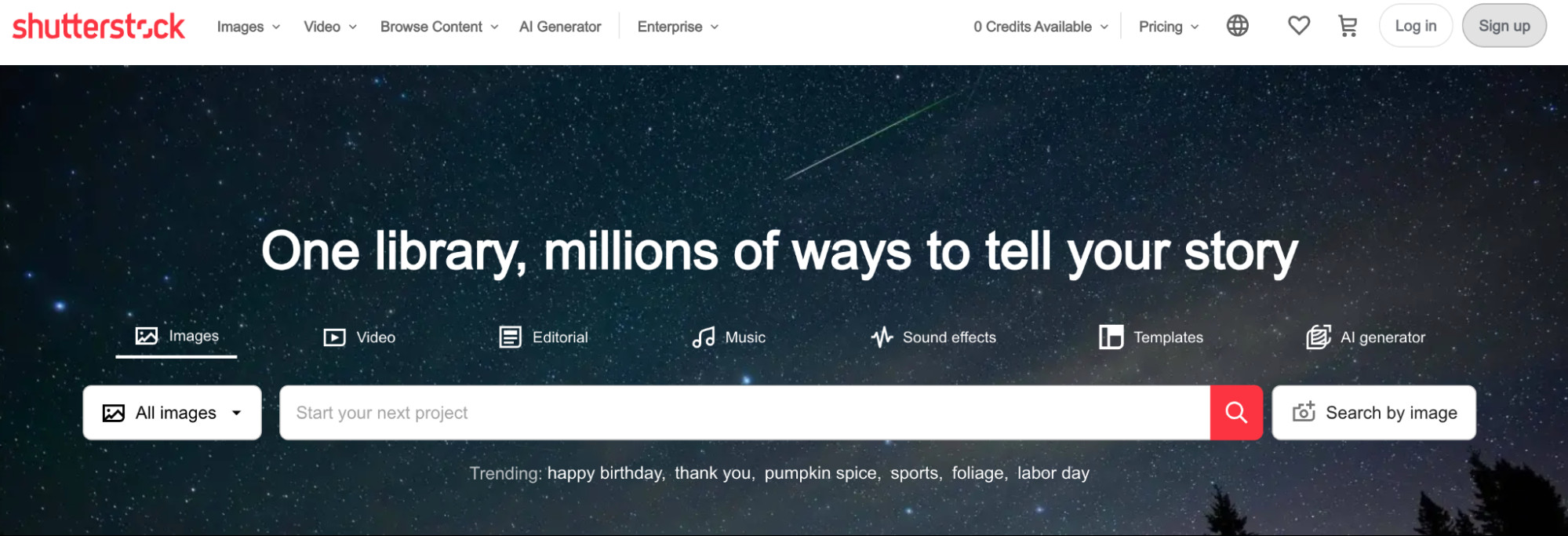 Shutterstock homepage offering royalty-free images, videos, and music, an asset for dfphoto.net photographers.
Shutterstock homepage offering royalty-free images, videos, and music, an asset for dfphoto.net photographers.
Why is Shutterstock so popular? Shutterstock is a well-known micro-stock site with cheaper, non-exclusive photos. According to their website, they’ve paid out over $1 billion to its community in the past 15 years. It’s ideal for those starting in stock photography and focusing on contributing a large volume of images.
How to Get Paid on Shutterstock
What can you expect for payouts on Shutterstock? Payouts range from 15% to 40%, based on earnings over time. Shutterstock also offers an affiliate program, providing an additional income stream by referring new photographers or customers.
1.4 Getty Images
 Getty Images' homepage featuring a search bar to find high-quality photos and images, essential for dfphoto.net users.
Getty Images' homepage featuring a search bar to find high-quality photos and images, essential for dfphoto.net users.
What makes Getty Images a premium choice? Getty Images attracts brands and publishers seeking high-quality and exclusive images. The platform, along with its microstock site, iStock, reaches over 1.5 million customers worldwide. Due to its reputation, Getty has stricter standards for submissions.
How to Get Paid on Getty Images
How does Getty Images handle contributor payments? After being accepted as a contributor with a set of sample photos, you can earn between 15% and 45% of an image’s license fee. This makes it a lucrative but competitive platform.
1.5 iStock
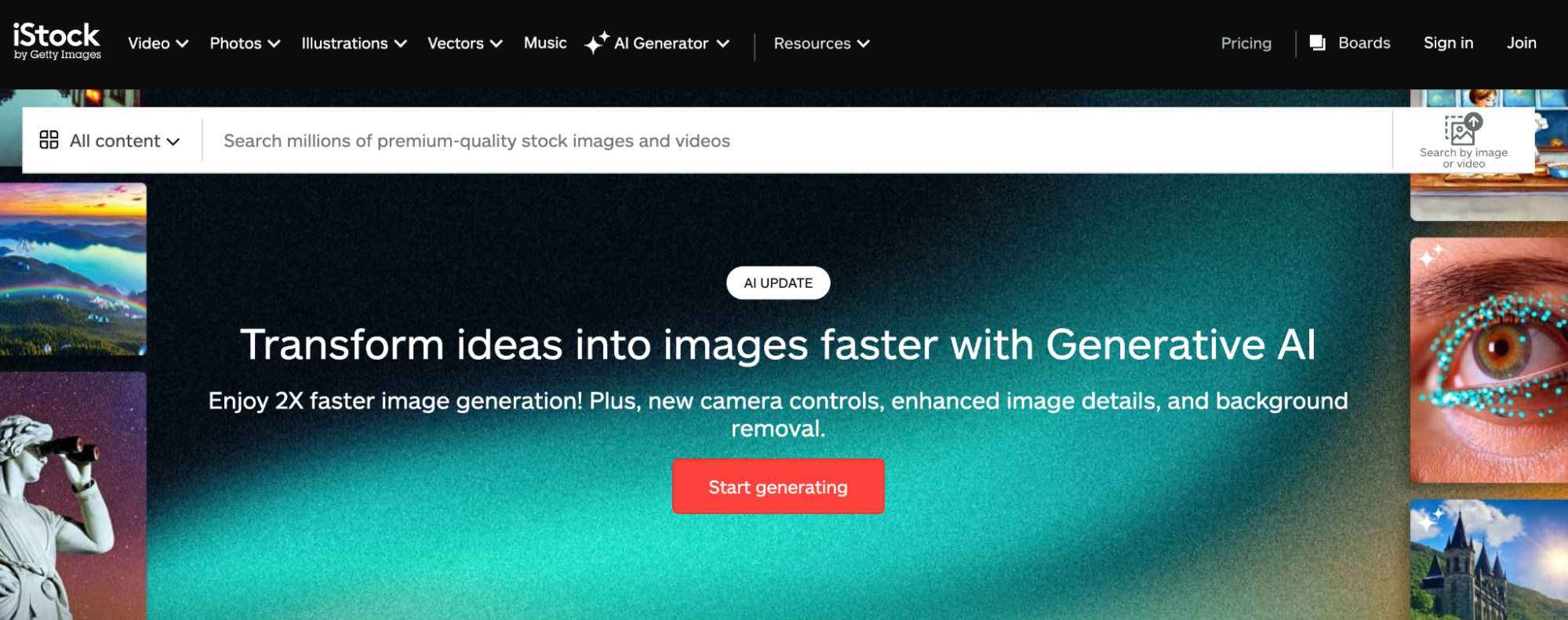 iStock landing page showcasing its generative AI-powered image creator, appealing to dfphoto.net's tech-savvy audience.
iStock landing page showcasing its generative AI-powered image creator, appealing to dfphoto.net's tech-savvy audience.
What are the benefits of using iStock? iStock, an offshoot of Getty Images, allows non-exclusive photos, meaning you can sell your images on other agencies. This flexibility makes it a popular choice among photographers.
How to Get Paid on iStock
What is the commission structure on iStock? Commissions range from 15% to 45%, depending on the contributor agreement. Applying to become a contributor requires a submission of sample images to ensure quality.
1.6 Stocksy
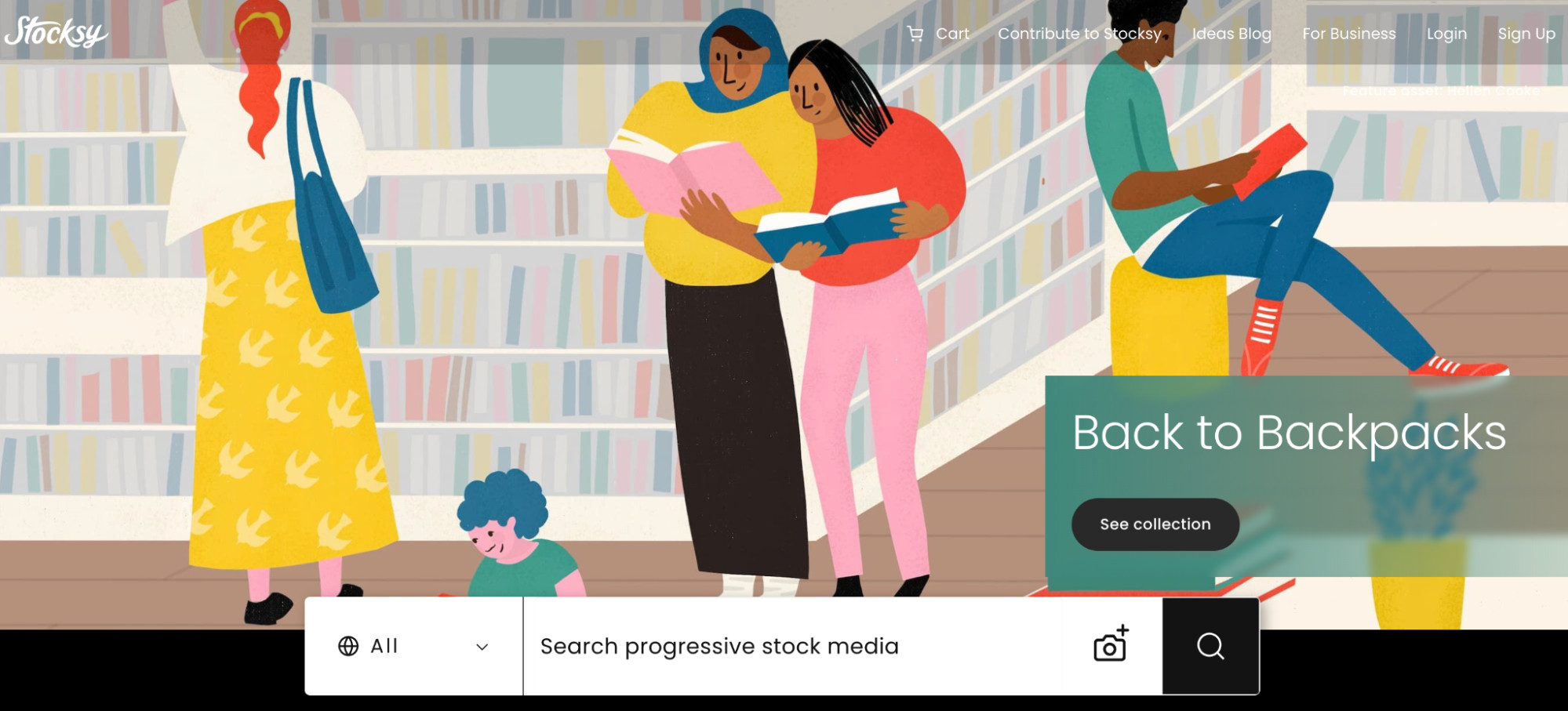 Stocksy homepage featuring a graphic of people in a library, illustrating the platform's artistic community focus for dfphoto.net.
Stocksy homepage featuring a graphic of people in a library, illustrating the platform's artistic community focus for dfphoto.net.
What distinguishes Stocksy from other platforms? Stocksy offers high payouts to contributors, with a 50% royalty on standard licenses and 75% on extended licenses. However, all photos must be exclusive to the platform. According to Stocksy, it’s an artist-owned cooperative, giving contributors a say in the business.
How to Get Paid on Stocksy
How are contributors paid on Stocksy? Contributors are paid monthly via PayPal, Payoneer, or check, with a minimum payout of $100. Being an artist-owned cooperative, contributors may also receive profit-sharing.
1.7 Picfair
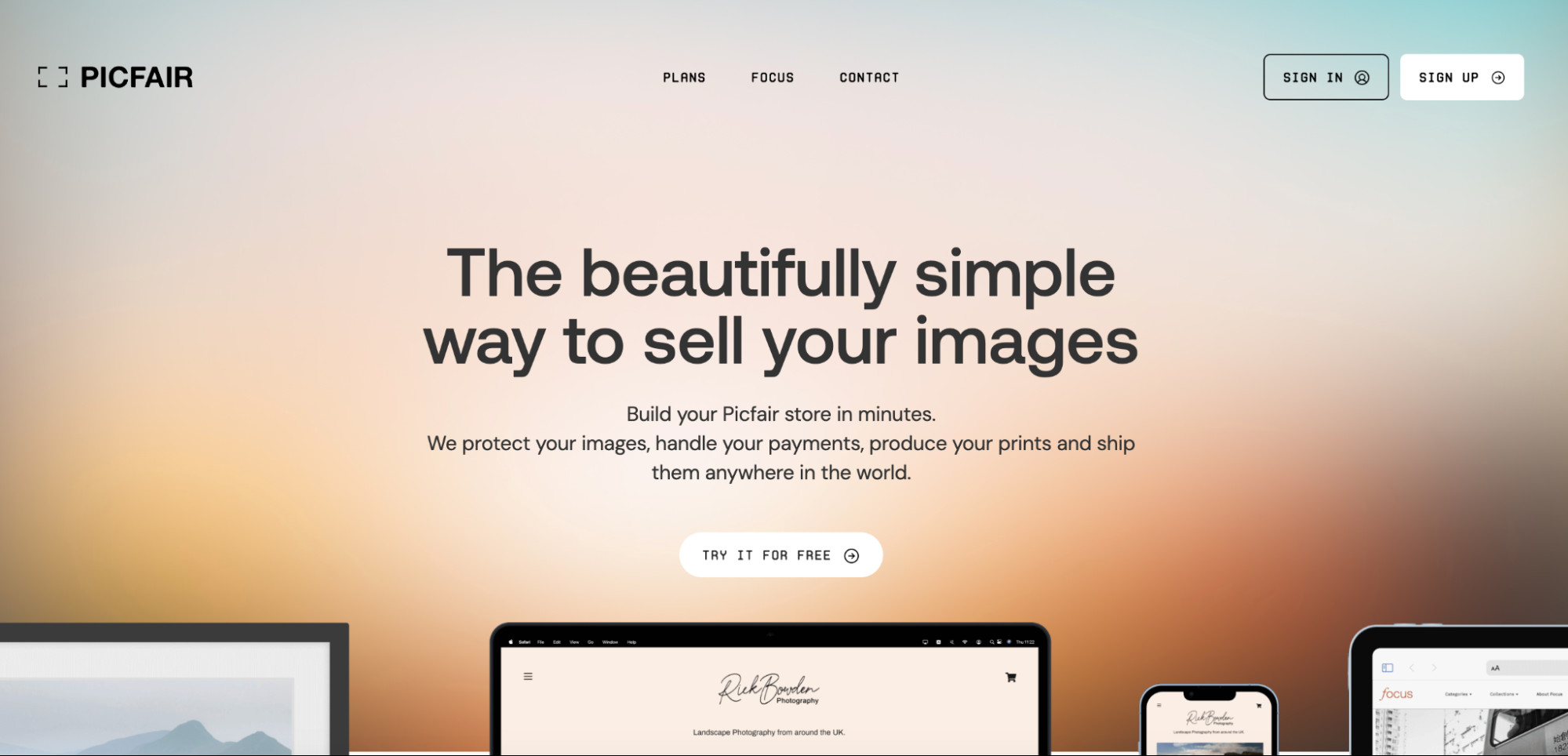 Picfair landing page for a website builder designed for photographers, perfect for dfphoto.net users seeking online portfolios.
Picfair landing page for a website builder designed for photographers, perfect for dfphoto.net users seeking online portfolios.
Why should you consider Picfair? Picfair provides a great option for photographers wanting more control over their online photo portfolio. You set your own prices for both prints and digital downloads, with Picfair handling payment processing, print production, shipping, and digital image licenses.
How to Get Paid on Picfair
What are the plan options on Picfair? By signing up for a Plus plan, priced at $4 per month when billed annually, you can create a custom Picfair store with up to 10,000 images for sale as prints or downloads.
1.8 Adobe Stock
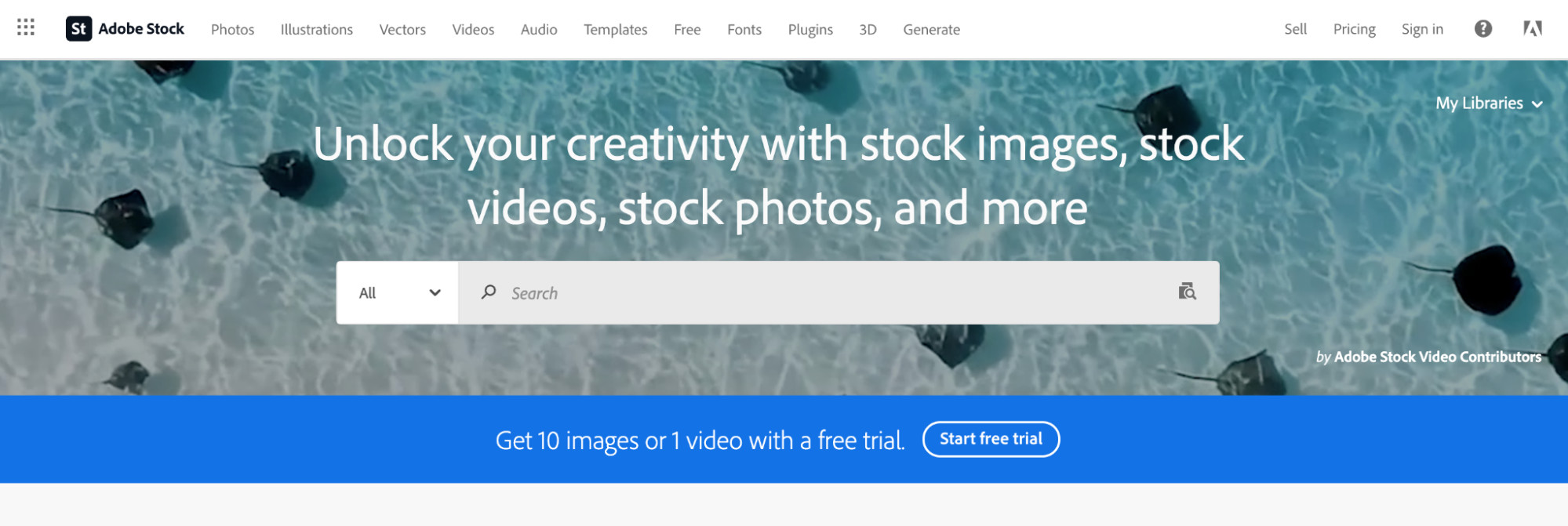 Adobe Stock homepage featuring a search bar against an ocean scene, highlighting its integration with Adobe software for dfphoto.net.
Adobe Stock homepage featuring a search bar against an ocean scene, highlighting its integration with Adobe software for dfphoto.net.
What are the advantages of using Adobe Stock? Adobe Stock integrates seamlessly with Adobe’s popular photography software. If you use the Adobe suite, you can easily add your images, videos, vectors, and illustrations to their online stock photo platform.
How to Get Paid on Adobe Stock
What royalty rates does Adobe Stock offer? Contributors who link their Adobe ID to Adobe Stock can earn 33% royalties on photos and 35% on videos, making it an attractive option for Adobe users.
1.9 Envato Elements
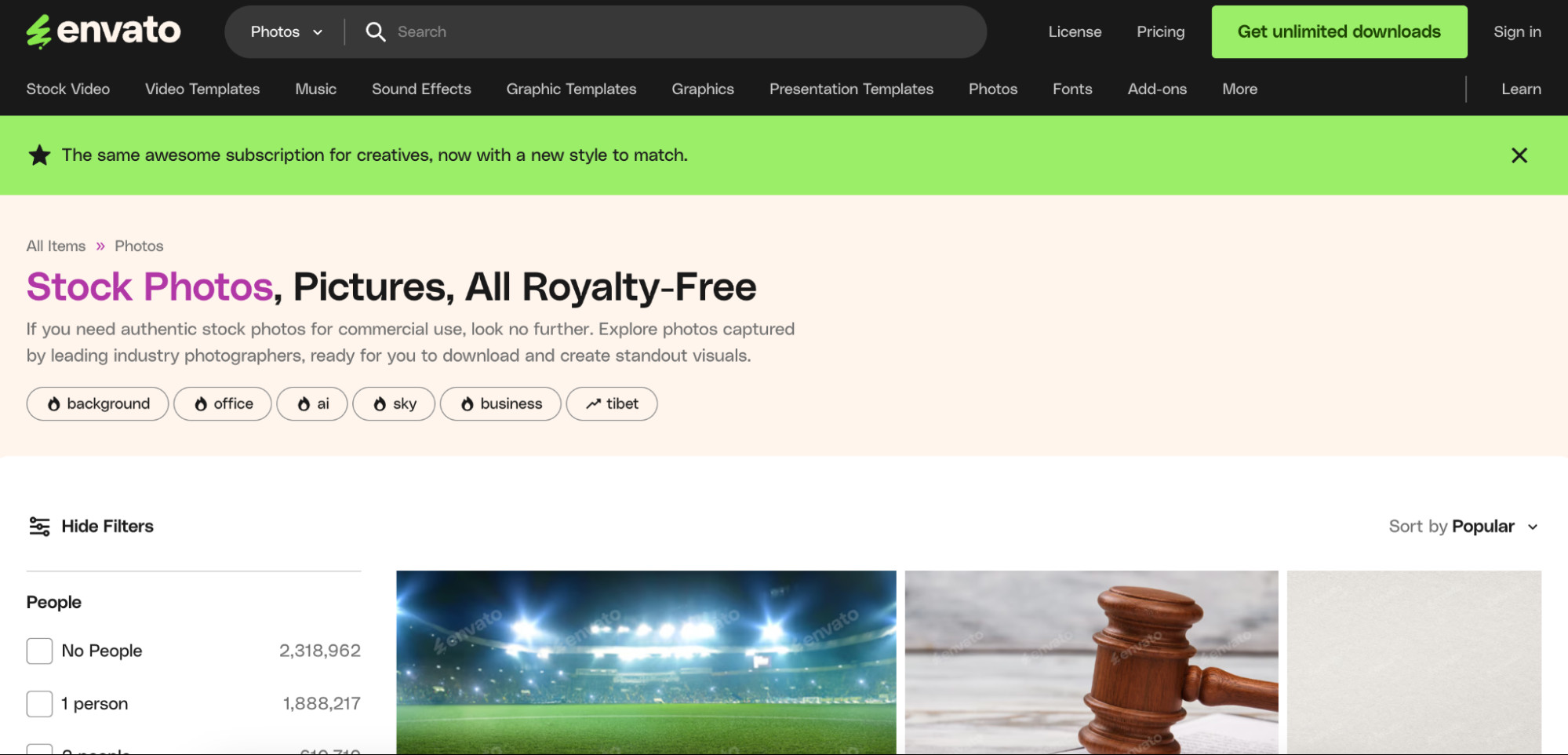 Landing page for stock photos on Envato Market, appealing to dfphoto.net users looking for diverse creative assets.
Landing page for stock photos on Envato Market, appealing to dfphoto.net users looking for diverse creative assets.
What does Envato Elements offer to photographers? Envato Elements allows you to sell your photos online and connect with potential clients. You can sell photos on their app or upload them to your own site on the brand’s domain, providing flexibility and reach.
How to Get Paid on Envato Elements
How does Envato Elements share revenue? Contributors earn between 25% and 50% of net subscription revenue, making it a potentially lucrative platform based on subscriber engagement.
1.10 Unsplash+
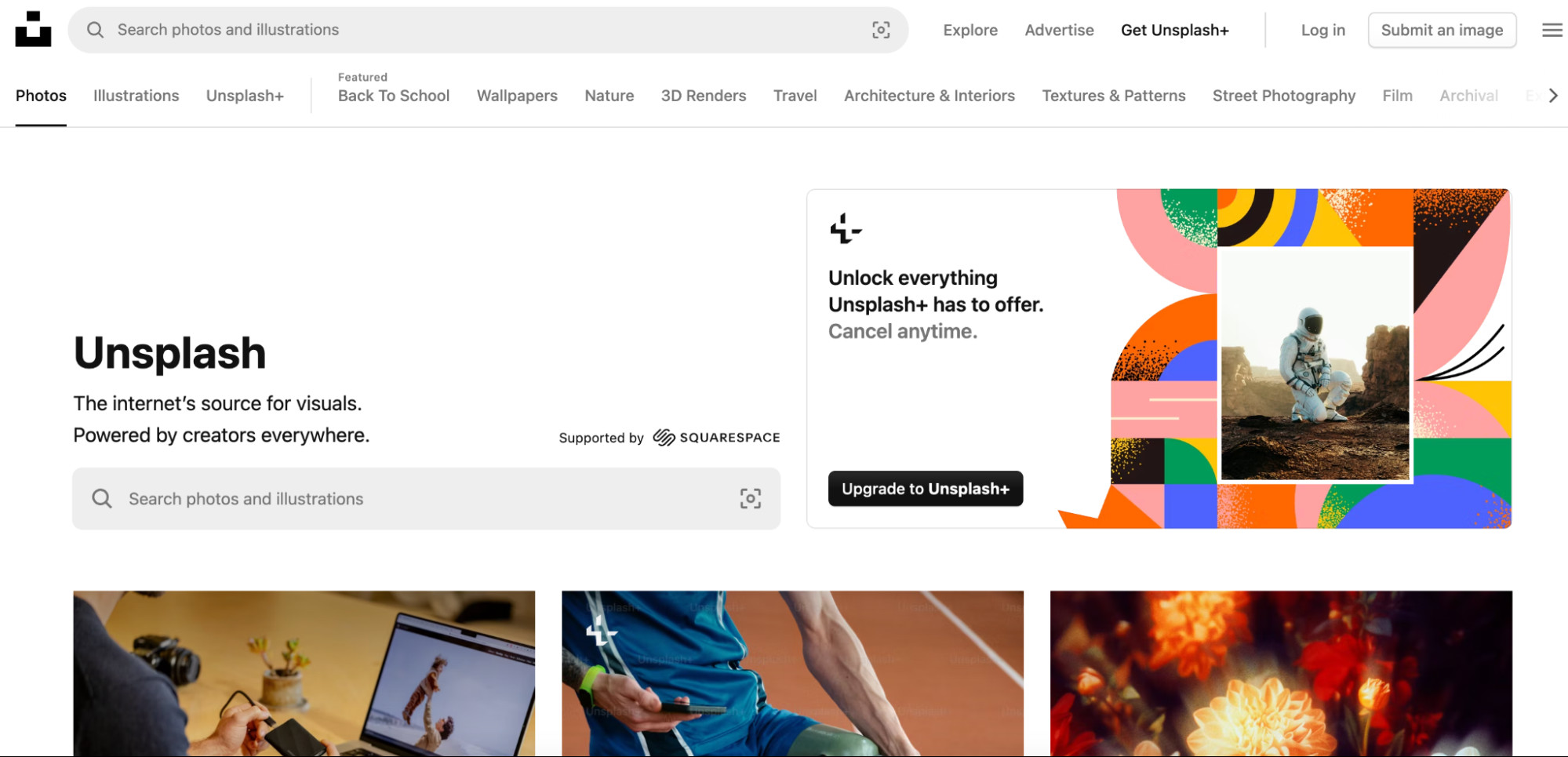 Unsplash homepage showing stock photos and a call-to-action for Unsplash+, attracting dfphoto.net users with its free and premium options.
Unsplash homepage showing stock photos and a call-to-action for Unsplash+, attracting dfphoto.net users with its free and premium options.
Why is Unsplash+ unique? Unsplash, owned by Getty, pays photographers for submitting images for specific assignments through its Unsplash+ program. This model differs from traditional sales-based compensation.
How to Get Paid on Unsplash+
What are the payment terms for Unsplash+ contributors? Once accepted, you’ll see a list of briefs from Unsplash customers. Payment rates range from $5 to $30 per accepted image, offering a direct compensation model.
1.11 Dreamstime
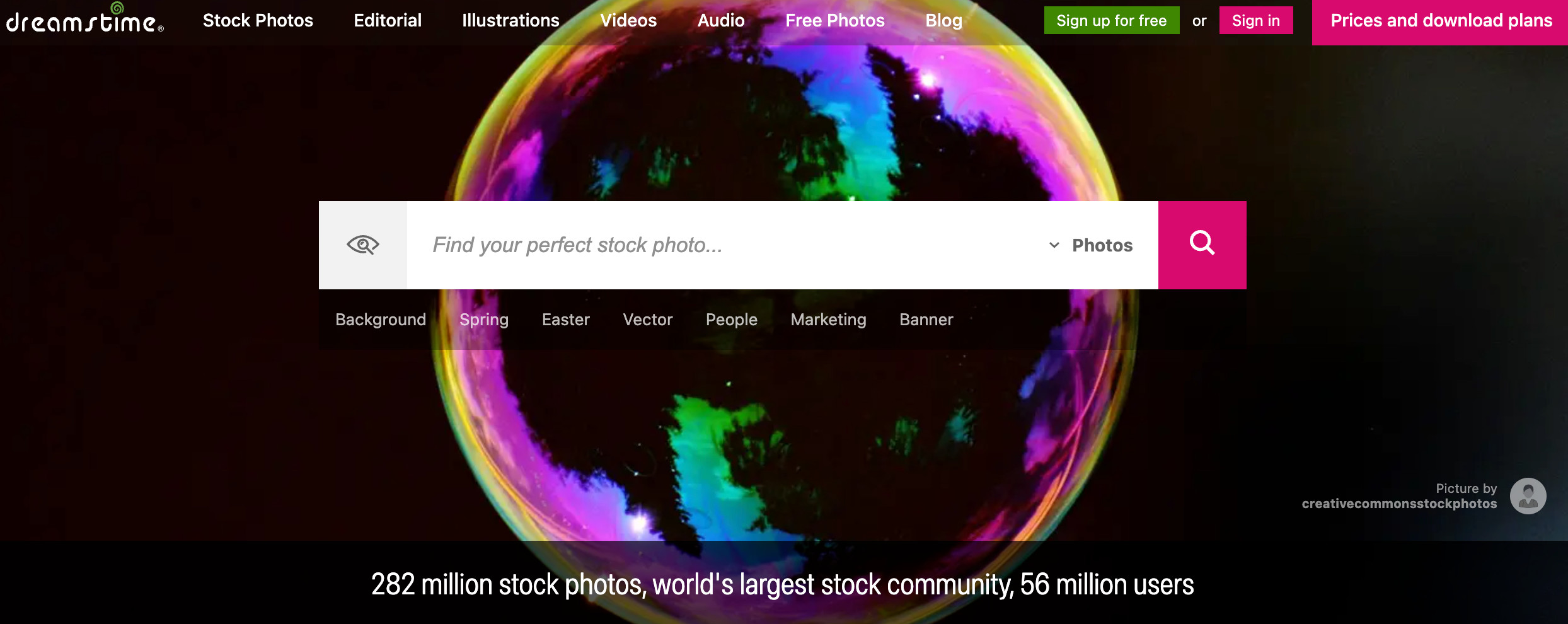 Dreamstime homepage showcasing the platform for selling photos, ideal for dfphoto.net users seeking a broad audience.
Dreamstime homepage showcasing the platform for selling photos, ideal for dfphoto.net users seeking a broad audience.
What is the scale of Dreamstime? Dreamstime is a microstock platform with over 250 million royalty-free media files and a user base of over 50 million. This extensive reach provides photographers with access to a large and active audience.
How to Get Paid on Dreamstime
What are the revenue-sharing options on Dreamstime? Dreamstime offers revenue sharing of 25% to 50% for non-exclusive content. Exclusive contributors can earn an additional 10% and receive 20¢ for each approved submission. They also have an affiliate program, providing additional income.
1.12 Snapped4U
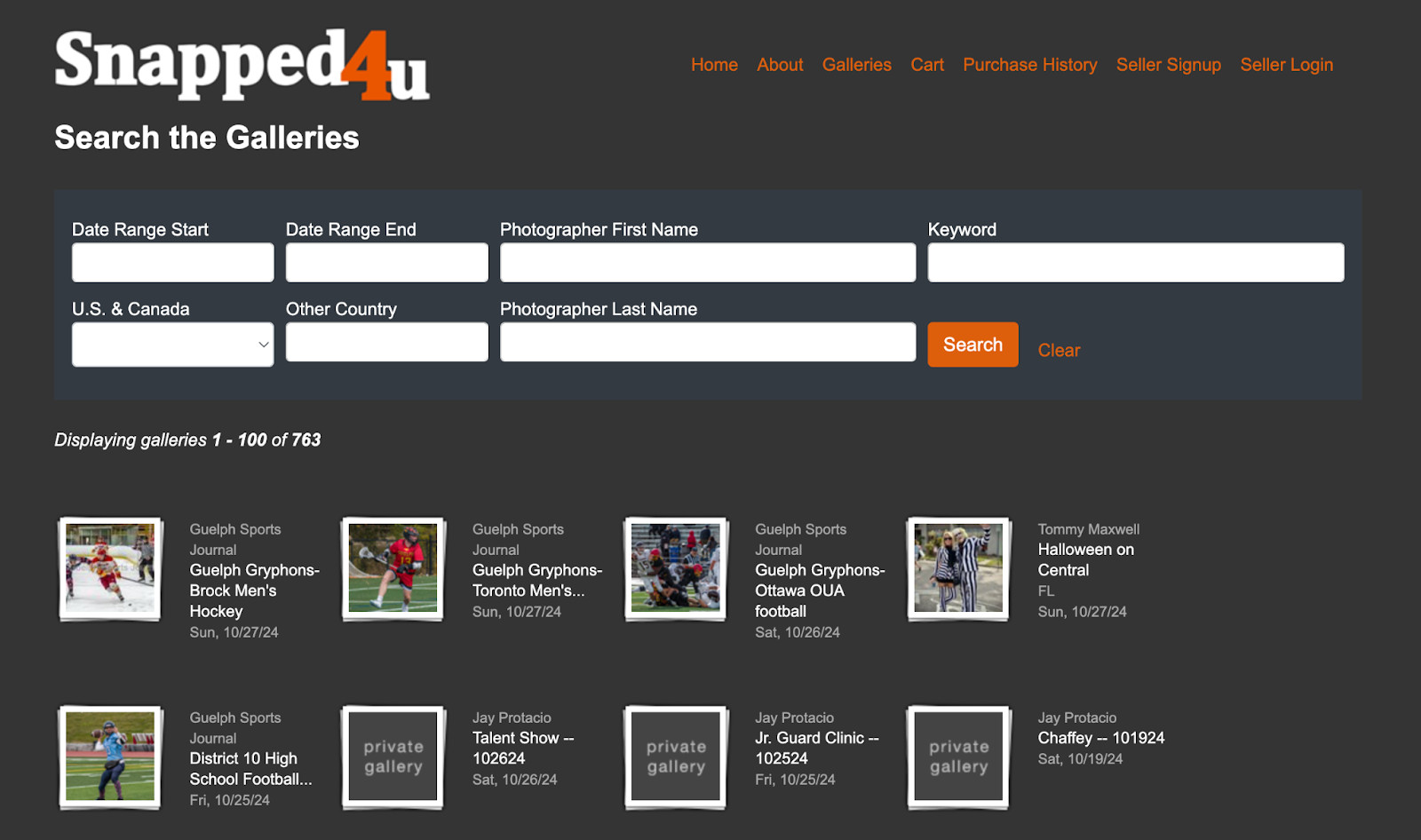 Snapped4U homepage featuring sports photography, showcasing the platform's focus on event and portrait photos for dfphoto.net.
Snapped4U homepage featuring sports photography, showcasing the platform's focus on event and portrait photos for dfphoto.net.
What niche does Snapped4U cater to? Snapped4U is a marketplace for portrait and event photographers. It allows you to create personalized galleries, set your prices (up to $20 per image), and sell digital files directly to clients.
How to Get Paid on Snapped4U
What are the commission fees on Snapped4U? Snapped4U charges a one-time $10 registration fee and retains a 10% to 12% commission on sales. Payments are made via PayPal on the first and 15th of each month.
1.13 Foap
 Foap creator landing page promoting a mobile app for photographers, highlighting its ease of use for dfphoto.net.
Foap creator landing page promoting a mobile app for photographers, highlighting its ease of use for dfphoto.net.
Why is Foap appealing to photographers? Foap allows you to sell commercial-quality images directly to brands and individuals. You can participate in “missions,” where brands set specific photo or video requirements and reward winners.
How to Get Paid on Foap
How much can you earn from Foap missions? Mission payouts range from $100 to $2,000. Additionally, you can sell individual photos on the Foap market, with Foap taking a 50% commission on all sales.
1.14 EyeEm
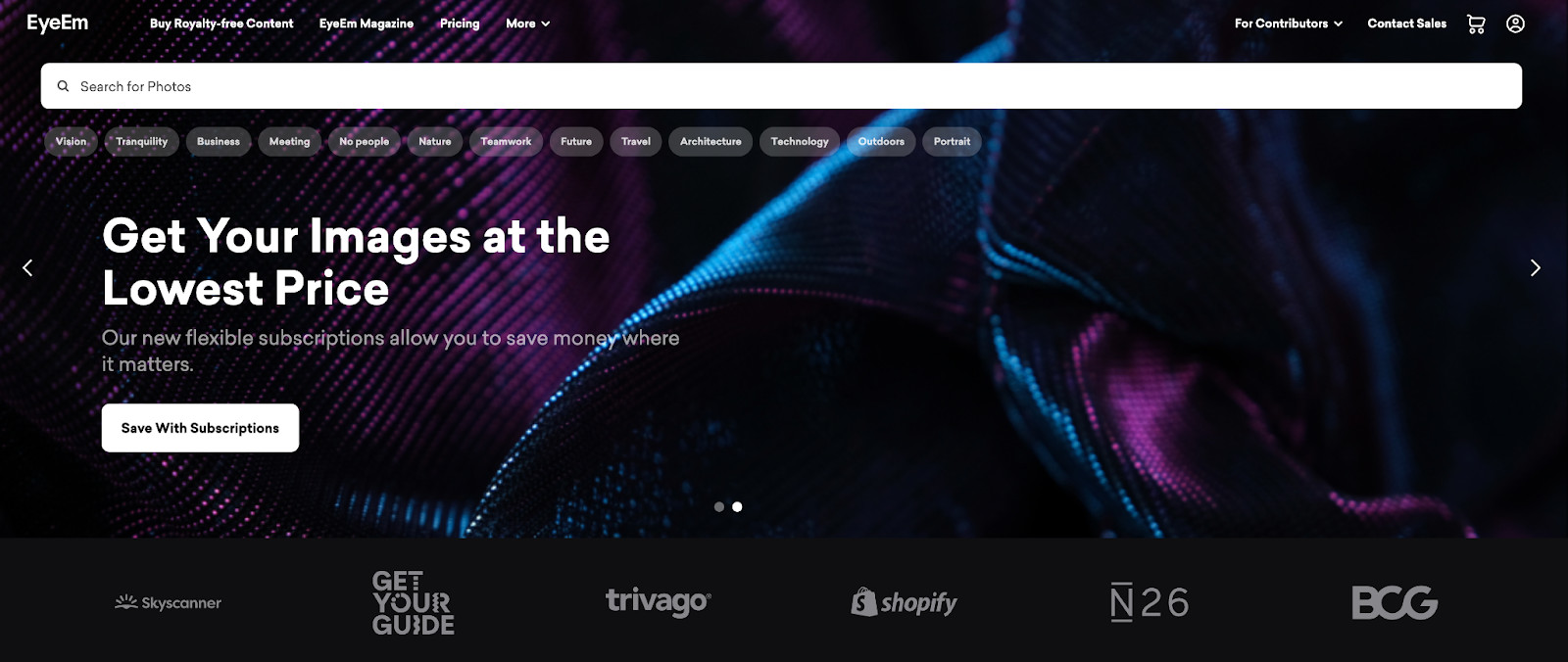 EyeEm homepage showcasing high-profile clients, attracting dfphoto.net users with its blend of community and marketplace.
EyeEm homepage showcasing high-profile clients, attracting dfphoto.net users with its blend of community and marketplace.
What makes EyeEm a unique platform? EyeEm combines a marketplace with a photographer community. The platform invites photographers to contribute to missions that call for images on specific themes.
How to Get Paid on EyeEm
What is the commission rate on EyeEm? Contributors earn a 50% commission on each sale made through the EyeEm marketplace. Payments are processed via PayPal.
1.15 Pond5 (for videos)
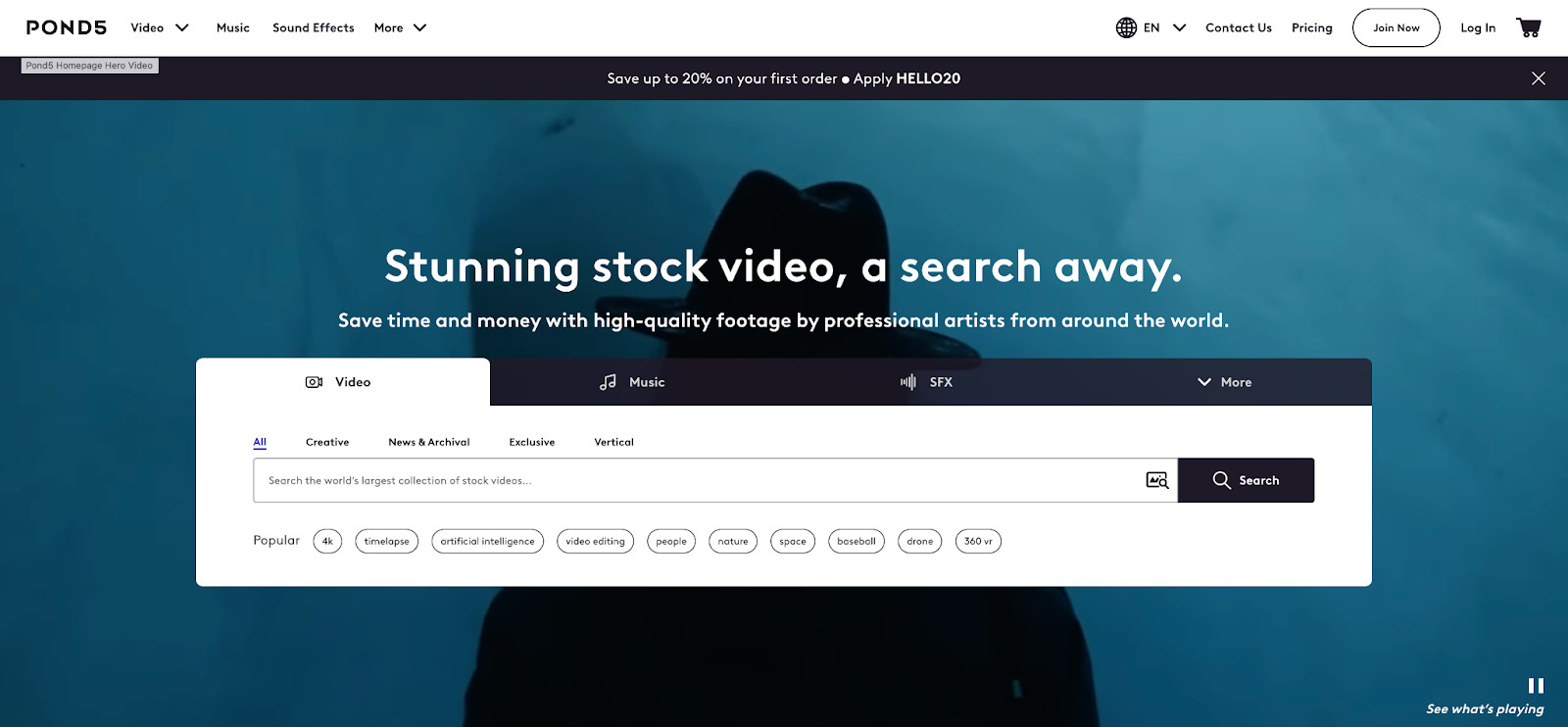 Pond5 homepage displaying video content, a valuable resource for dfphoto.net users interested in expanding into video.
Pond5 homepage displaying video content, a valuable resource for dfphoto.net users interested in expanding into video.
Why should video artists use Pond5? Pond5 is a marketplace for selling royalty-free videos, music, sound effects, and other assets. Clients include major brands like the BBC and Disney, providing significant exposure.
How to Get Paid on Pond5
What are the earning opportunities on Pond5? Video artists earn a 40% royalty share, with the option to make content exclusive and earn up to 60%. Pond5 also offers a referral program for additional income.
2. Tips for Selling Photos Online
To succeed in the competitive world of stock photography, it’s important to adopt strategies that enhance your visibility and appeal to potential buyers. Here are some tips to help you run a successful stock photo business, brought to you by dfphoto.net.
2.1 Define Your Stock Photography Niche
Why is defining a niche important? Many photographers have a consistent style or theme that runs through their work. Whether your focus is travel, fashion, nature, or food, consistency is key to attracting a specific audience.
How do you find your niche? You can discover styles and subjects you enjoy shooting that also resonate with audiences. Keyword research helps analyze the demand for topics related to your photographs. Google Trends can also highlight image topics gaining popularity, according to recent analytics from the Santa Fe University of Art and Design’s Photography Department.
2.2 Get on Instagram
Why use Instagram? Just like bloggers and YouTubers, photographers should build their audiences to succeed in selling images online.
How do you maximize Instagram’s potential? Visual social platforms like Instagram can help you reach a wide audience. Use Instagram tools to follow the right accounts, engage with popular hashtags, and grow a following of potential customers. Linking your social media accounts makes managing your photo-sharing across platforms easier.
2.3 Integrate E-Commerce into Your Website
What are the benefits of e-commerce integration? Most photographers have their own site to showcase their work. Adding a Shopify Buy Button to your site makes it easier for customers to purchase stock images directly from you.
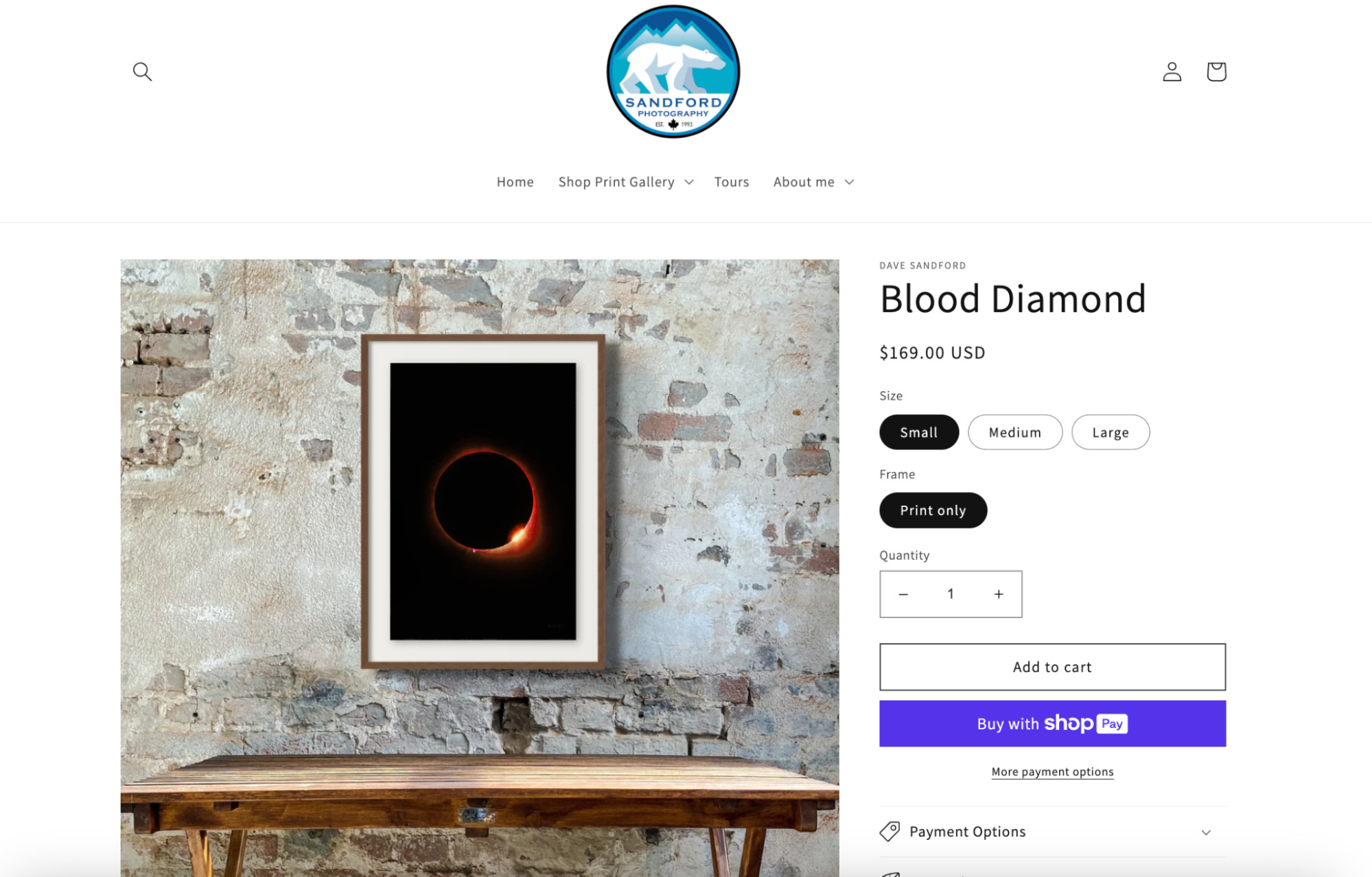 Product page for a moon print with a red border against a black background, illustrating e-commerce integration for dfphoto.net users.
Product page for a moon print with a red border against a black background, illustrating e-commerce integration for dfphoto.net users.
How can you set up an e-commerce site? The easiest way to sell photos online is to build a personalized portfolio page or store on Shopify. Use a pre-designed art and photography theme, or combine a free theme with a gallery app.
2.4 Understand Your Market
Why is market understanding crucial? Your target market is the group of people most likely to buy your photos. Understanding who they are, what they’re interested in, and what they’ll buy allows you to produce photos that appeal to them.
How can you identify your target market? For example, if you specialize in wedding photography, your target market might include wedding stationery brands or suit wholesalers wanting royalty-free images of wedding celebrations in their marketing materials. This buyer persona will inform the types of images you create and where you sell them.
3. How to Set Up Your Online Portfolio
Creating an online portfolio is essential for showcasing your photography and attracting potential clients. Here’s a step-by-step guide on how to launch your online photography portfolio, courtesy of dfphoto.net.
3.1 Choose the Right Platform
How do you select the best platform? There is no one-size-fits-all platform to monetize your photos. The best choice depends on your business goals and how much control you want over your imagery.
What are your options?
- Hobby or small passive income: Use stock photo submissions on sites like iStock or Alamy.
- Assignments from brands: Apply to be an Unsplash+ contributor.
- Complete control: Opt for an e-commerce platform like Shopify.
3.2 Plan Your Portfolio’s Structure
What makes a good portfolio structure? A portfolio is a photographer’s résumé, showcasing past work to potential clients.
What elements should you consider?
- Layout: Photos should be central, but context on what the image is about is helpful.
- Social proof: Gather quotes from happy customers or showcase how your images have been used in successful campaigns.
- Categories and organization: Tag and organize your images to help potential customers browse.
- Gallery size: Only include high-quality images that showcase your best work.
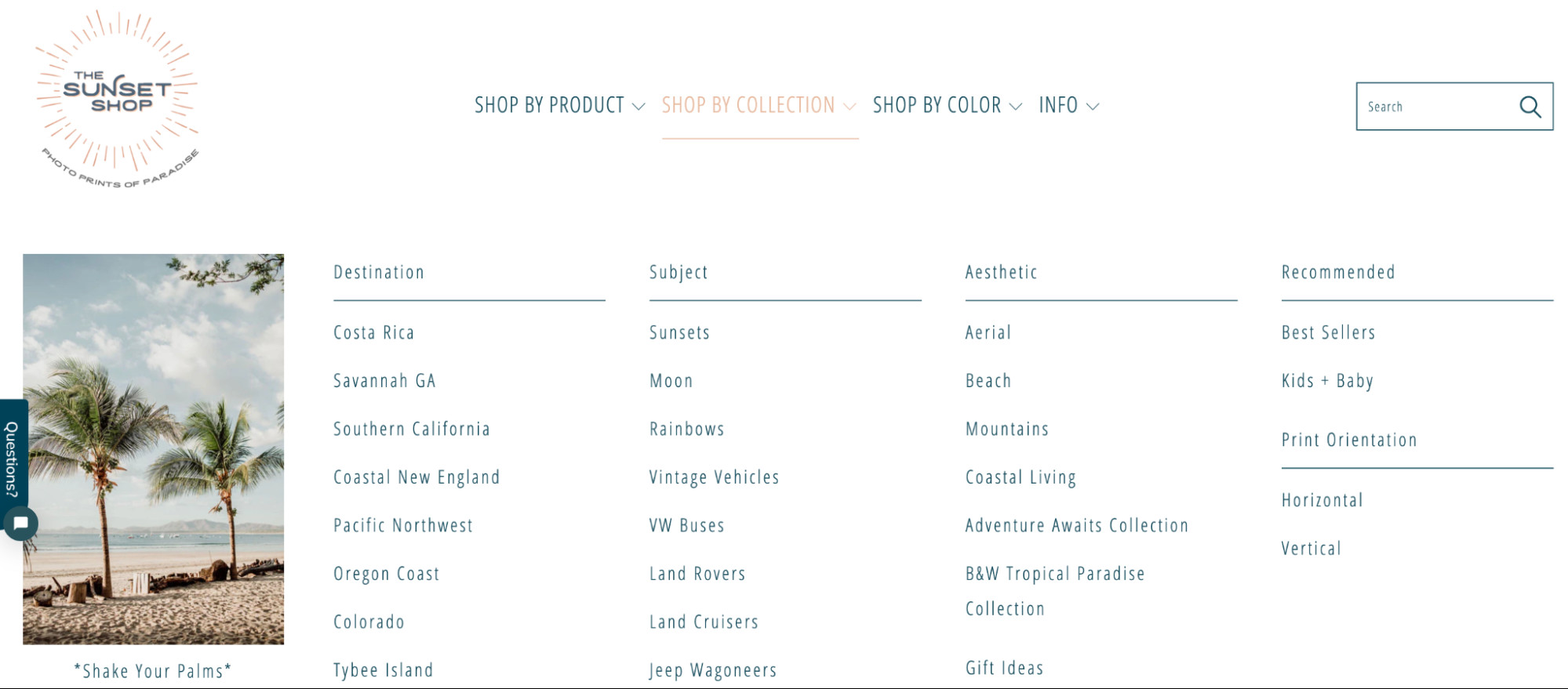 Example product categories on a photo print website, demonstrating organization for dfphoto.net users.
Example product categories on a photo print website, demonstrating organization for dfphoto.net users.
How can you effectively categorize your work? For example, The Sunset Shop has categories for photo type, aesthetic, and destination.
3.3 Optimize Images for the Web
Why is image optimization necessary? Fast-loading images are essential for user experience. Large image files can slow down webpage loading times.
How do you optimize images?
- Compress image sizes: Keep images as small as possible without compromising quality, typically between 60% and 80%.
- Use descriptive file names: Name your file “summer-evening-nature” instead of “IMG_3542.jpg.”
- Write alt text: Tell search engines and screen readers what your photo is about.
3.4 Create an About Page
Why include an About page? People buy from people, so an About page introduces you to prospective customers.
What should you include?
- Summary: Provide a brief summary of who you are and your photography journey.
- Personal brand: Share your love of photography, how you got started, what you love to shoot, and where you get your inspiration.
3.5 Implement E-Commerce Functionality
How does e-commerce functionality help? An e-commerce platform handles the logistics of selling photos online.
What can you do with Shopify?
- Build an online storefront: Allow people to self-serve and buy your products.
- Set up shop on social media: Use storefronts like Instagram Shop.
- Take payment and handle taxes: Streamline financial transactions.
- Ship products: Manage both physical and digital delivery.
- Manage marketing campaigns: Promote your work effectively.
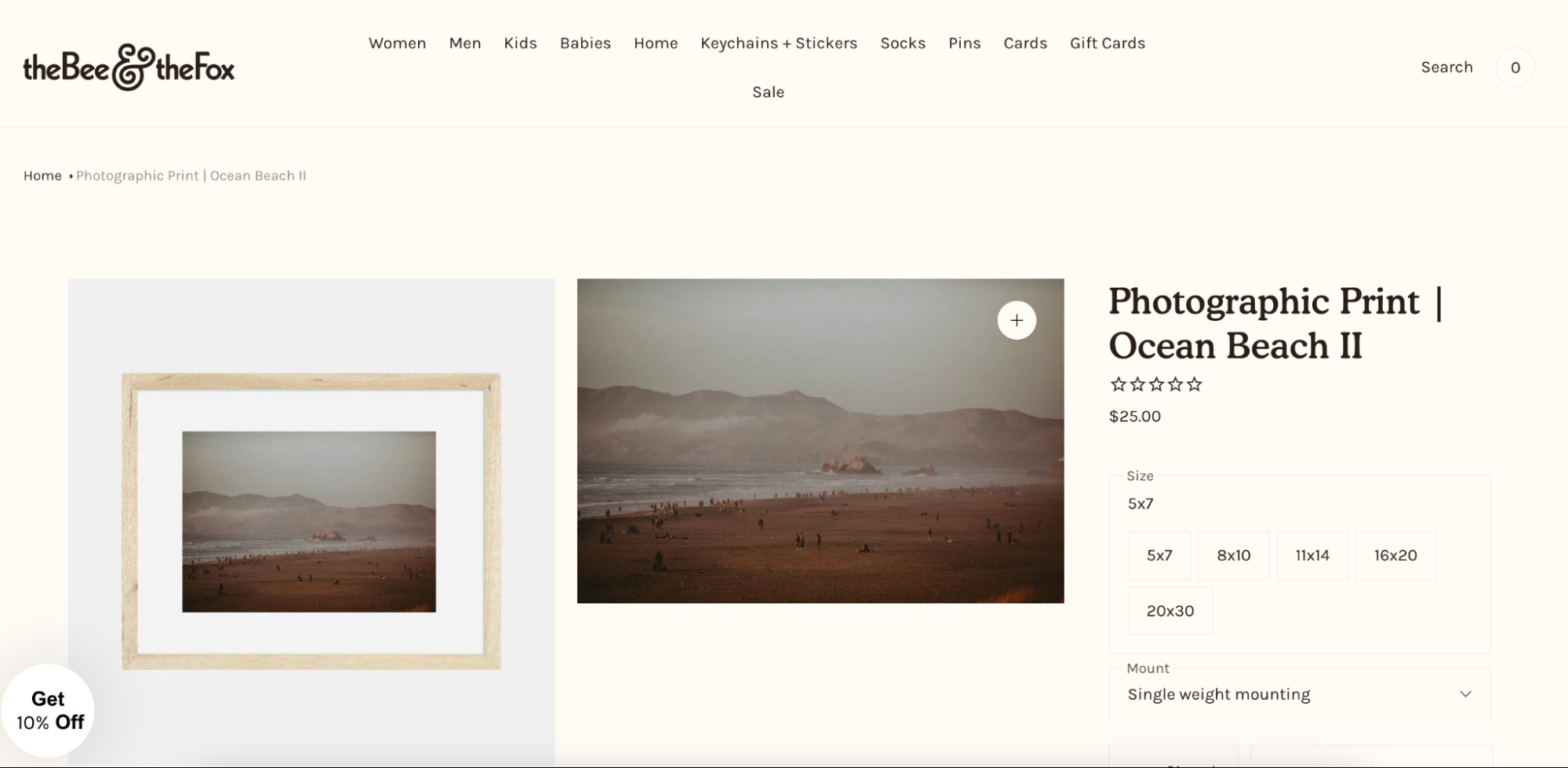 Product page for a 5×7 printed photo of a beach, showcasing e-commerce integration for dfphoto.net users.
Product page for a 5×7 printed photo of a beach, showcasing e-commerce integration for dfphoto.net users.
What are examples of successful e-commerce integration? The Bee & The Fox uses Shopify to sell photography prints online.
3.6 Ensure Mobile Compatibility
Why is mobile compatibility important? Studies estimate that over half of global website traffic comes from mobile devices.
What elements ensure mobile compatibility?
- Responsive website design: Adjusts to different screen sizes.
- Vertical display: Optimizes photo presentation on smaller screens.
- Large, finger-friendly buttons: Improves user interaction.
3.7 Launch and Promote Your Photos
How do you launch and promote your work? Share your photos using marketing tactics like:
- Reposting on social media: Increase visibility and engagement.
- Pinning on Pinterest: Link back to your portfolio site.
- Gifting free prints to influencers: Leverage their reach and credibility.
- Documenting behind-the-scenes: Use TikTok, YouTube, or Instagram Reels.
- Building an email list: Offer discounts to website visitors for their first order.
4. How to Sell Photos as Prints and Photo Books
You can create and sell items featuring your photography, such as framed prints or pillows, allowing customers to own a piece of your art. According to a study by the Santa Fe University of Art and Design, 70% of photographers find that selling physical products enhances their brand recognition.
How can you get started? Selling your own physical products can be simpler than you think. The best way to sell photos online as physical prints or products is to work with a local photo lab or use a print-on-demand company to dropship a wide range of products.
Before committing, be sure to order samples to ensure the product quality matches your photos.
4.1 Selling Photography Online as Photo Books
Photo books are another way to feature your photography. The more niche and consistent your photography, the more likely you’ll be able to put together a stellar photo book based around a compelling theme.
While you may not get the best margins with print-on-demand services, it’s a risk-free way to test demand for your products before investing upfront.
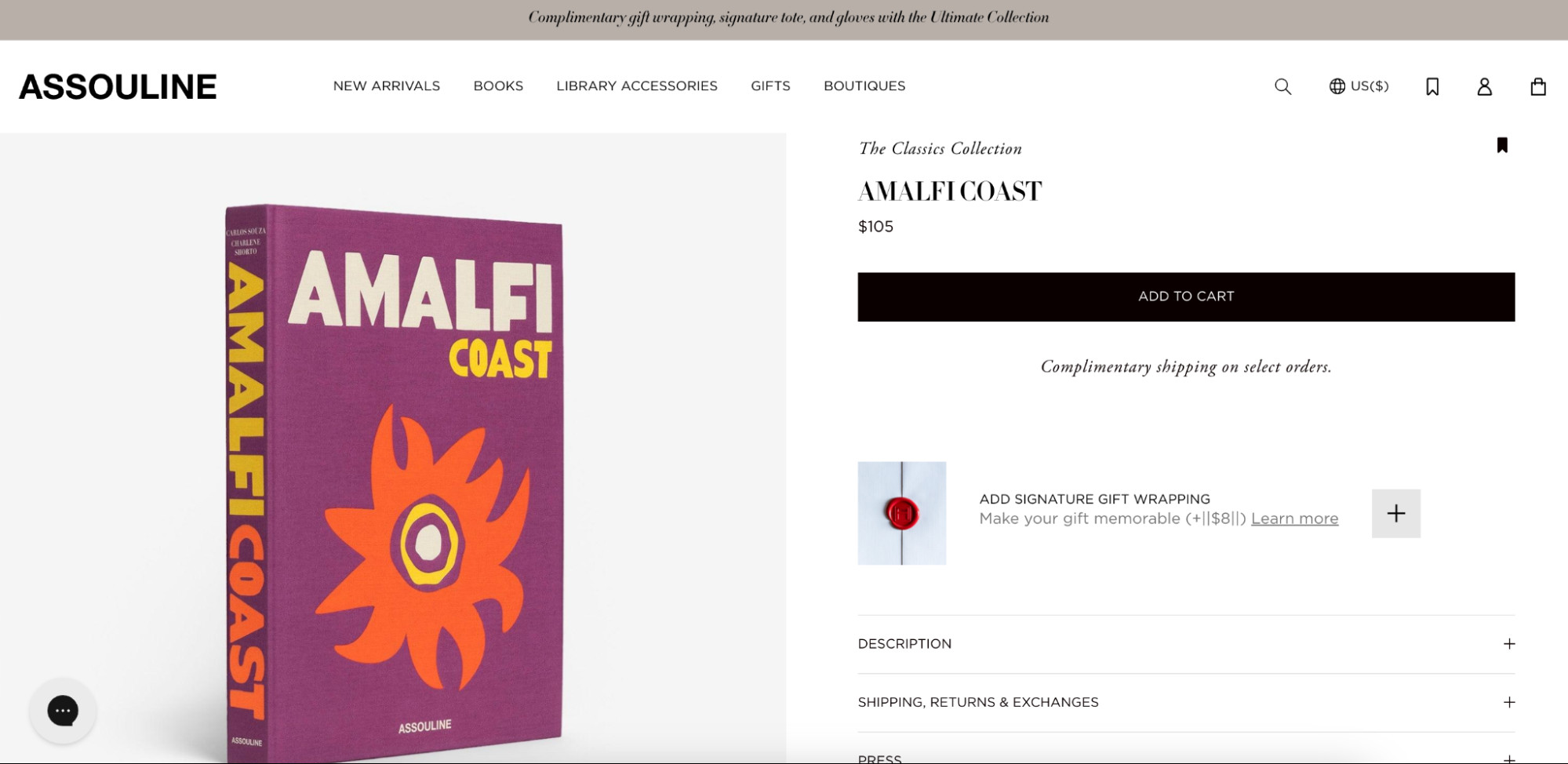 Photobook of images taken on the Amalfi Coast, inspiring dfphoto.net users to create themed collections.
Photobook of images taken on the Amalfi Coast, inspiring dfphoto.net users to create themed collections.
What are examples of successful photo books? Assouline sells premium photo books of images shot in popular holiday destinations.
5. How to Sell Your Photography Services
Whether you’re covering events, doing fashion shoots, or getting into product photography, there are plenty of business opportunities for professional photographers.
How can you promote your services?
- List your services: Use freelance directories like Fiverr and Upwork.
- Network locally: Meet with clients via video chat.
Here are some networking tips:
- Business cards: Always have them handy.
- LinkedIn profile: Showcase your work and optimize for your main photography service.
- Networking events: Attend events where entrepreneurs and event organizers are present.
- Personal brand: Regularly share your work on social media.
Since photographers operate in strict time slots, it’s beneficial to have a booking platform. Platforms like Setmore and SimplyBook.me offer free plans that work well for photographers. If you’re using Shopify, add a scheduling app to book appointments directly from your site.
6. Pricing Strategy for Selling Photos Online
Your talent and determination decide your earning potential, but the income you get from doing what you love is invaluable.
How do you determine a pricing strategy?
- Market research: Ask your target market how much they’d pay and see how much comparable photos sell for on stock image sites.
- Profit margins: Consider costs like equipment, website hosting, and marketing.
- Set different prices for usage: Exclusive photos can sell for more than non-exclusive ones.
- Offer discounts: Experiment with discounts and promotions.
- Consider product bundles: Sell collections of related images at a discounted price.
7. Legal Primer for Selling Your Photos Online
While rights and licenses related to selling photography may seem confusing, there are key terms and concepts you should know to protect yourself.
7.1 Glossary of Legal Terms for Selling Photos Online
- Editorial use: Permission to use in blogs, newspapers, magazines, etc.
- Commercial use: Permission to use in marketing and advertising.
- Retail use: Permission to use in creating physical products for sale.
- Exclusive use: The licensee is the only one who can use the photo.
- Non-exclusive use: Licenses can be purchased by anyone.
- Public domain: No restrictions or copyright claims.
- Creative Commons: Conditional usage allowed with stated restrictions.
- Royalty free: Others can buy a license and use the photo unlimitedly.
- Rights managed: A one-time license with usage restrictions.
- Right of publicity: Subjects in your photos have rights to their inclusion.
7.2 What to Do If Someone Steals Your Photos
Theft is common, and many do it unknowingly. Watermark your images before selling them online. A smaller watermark in the corner is less intrusive, while a larger watermark offers more protection.
What should you do if someone steals your photos? A cease and desist request usually works. You can also send an invoice for using your photo. At the very least, try to get others to credit you whenever they use your work. Backlinks to your portfolio site drive traffic and improve SEO.
How To Sell Photos Online FAQ
What is the best way to sell photographs?
Selling them as stock images for sale on third-party websites like iStock, Shutterstock, or Alamy is the best way to sell photographs. Selling your photos through stock sites is quick, easy, and affordable.
Where can I sell my photos online for money?
You can sell your photos online for money at Alamy, 500px, Shutterstock, Getty Images, iStock, Stocksy, Picfair, Adobe Stock, Envato Elements, and Unsplash. These platforms offer diverse opportunities for photographers to monetize their work.
How do you make money from stock photography?
A stock photography website, or stock agency, sells high-priced and exclusive images that you upload. The agency licenses individual images to the client and sells them for a set price. Then you, the photographer, get a royalty payment.
Are you ready to elevate your photography career? Visit dfphoto.net for comprehensive guides, stunning photo collections, and a thriving community to support your journey.
Address: 1600 St Michael’s Dr, Santa Fe, NM 87505, United States
Phone: +1 (505) 471-6001
Website: dfphoto.net
Join us today and unlock your full potential in the world of photography!